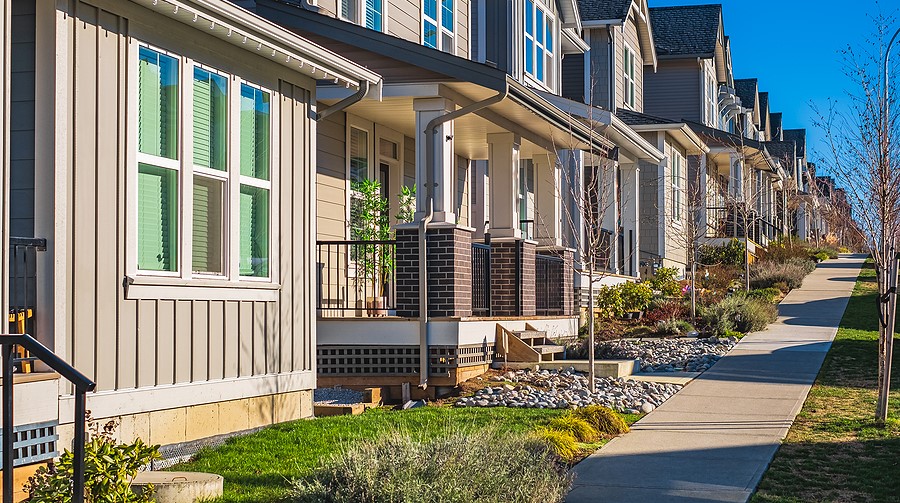News
What Is Urban Creep?
One increasingly pressing issue that communities all over the UK will face as time goes on is the issue of localised flooding caused by surface water runoff.
It’s expected that flood events will take place more regularly over the coming years as climate change brings with it more frequent and more extreme weather conditions, including periods of drought and intense and heavy rainfall.
Of course, we’re well used to rain in the UK and have a famously damp climate, but with this deluge of water expected to hit the country more regularly throughout the year, it’s highly likely that our ageing infrastructure will be overwhelmed very quickly, which will lead to flood water backing up into properties.
Another issue that will increase flood risks and put even more pressure on the pipe network is that of urban creep.
This refers to the loss of permeable surfaces like lawns, flower beds and other earthy areas, with green land being lost in line with increasing urbanisation and the changes that people are making to their own homes that don’t respect the need for permeable surfaces.
Recent research from the UK Centre for Ecology & Hydrology (CEH) investigated the issue of urban creep and urban expansion in Edinburgh and developed a way of mapping urbanisation using aerial photography of the city from 1990, 2005 and 2015.
It was found that Edinburgh is losing the equivalent of approximately 15 pitches of green land each year, much of which is down to people building on or paving over their private garden areas.
An important distinction to note is that urban creep refers to small-scale individual changes in existing urban communities, such as the building of conservatories, driveways and housing extensions in gardens, which can increase the risk of surface water flooding.
Urban expansion, meanwhile, refers to new housing developments or new industrial estates being built on existing recreational spaces or farmland. These developments do not increase local flood risks, unlike urban creep, because they are subject to very robust planning policies designed to prevent this.
Commenting on the findings, Dr James Miller – project manager and hydrologist at CEH – said: “The loss of pervious green land increases the risk of localised surface water flooding, as it creates more runoff that can exceed the drainage capacity.
“The scale of this increase was unknown, but mapping and quantifying urban creep means we can improve our understanding of where surface water may need improved management.”
Further research published in November last year by the National Infrastructure Committee found that stricter controls on property development and up to £12 billion of investment in drainage infrastructure over the next 30 years will be necessary to prevent flooding from affecting thousands more homes and businesses because of inadequate drainage.
In October 2022, the risks of surface water flooding were highlighted by localised floods all over England, off the back of a series of major incidents in 2021. In all, 1,500 properties were affected, while healthcare and transport networks were badly affected, as well.
Currently, there are 325,000 properties in England at high risk of this kind of flooding, facing a 60 per cent chance of being flooded in the next 30 years.
However, this could increase by an additional 230,000 properties by 2055 because of climate change-related extreme weather events and new developments that will put increasing pressure on drainage systems. The spread of impermeable surfaces, meanwhile, could see a further 65,000 properties pushed into the high-risk category.
The report went on to note that the first step to preventing this problem from increasing is to limit the effects of urban spread on drainage systems, with action being taken to expand existing drainage capacity both above and below ground.
This could be achieved through the likes of flood storage ponds and green gulleys, as well as addressing water management and funding to improve drainage system resilience so it can handle more frequent and more intense downpours without being overwhelmed.
National infrastructure commissioner professor Jim Hall said: “The solution is clear – reducing the amount of water flowing into drains, whilst also improving the capacity of those drains.
“That means stopping urban creep from increasing the amount of stormwater that drainage systems have to cope with and giving nature more opportunities to hold on to excess water, as well as targeted investment to ensure sewers can cope with growing pressures.”
One potential solution to the urban creep problem currently being investigated by water supplier United Utilities is the use of smart water butts.
The small Lancashire village of Forton is now part of the UK’s biggest high-tech drainage community, with around 30 homes and the local primary school receiving these smart water butts as part of a 12-month trial to help reduce flooding and stop the network from being overwhelmed during intense periods of rainfall.
Forton was selected for the pilot project because it has a historical issue of surface water flooding caused by urban creep and the increase in driveways, extensions and patios.
The water butts now installed in the village are run by solar power and contain artificial intelligence computers that allow the water firm to see how much rainwater has been collected so it can be released back into the sewer network before rain is forecast.
This then frees up space to collect the rain that’s on the way so as to prevent excess water from going into the sewers.
Early findings suggest that these smart water butts are up to 75 times as effective as standard water butts, saving up to 30,000 litres of water per installation from entering the network during peak demand.
Do you want to find out about water efficiency? Get in touch with the H2o Building Services team today to see how we can help.
